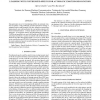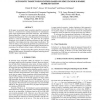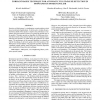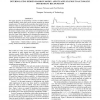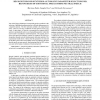2042 search results - page 59 / 409 » Automatic Understanding of Signals |
ICASSP
2010
IEEE
13 years 7 months ago
2010
IEEE
Data sparseness is an ever dominating problem in automatic emotion recognition. Using artificially generated speech for training or adapting models could potentially ease this: t...
ICIP
2010
IEEE
13 years 5 months ago
2010
IEEE
In this paper, an automatic target recognition algorithm is presented based on a framework for learning dictionaries for simultaneous sparse signal representation and feature extr...
ICASSP
2009
IEEE
14 years 2 months ago
2009
IEEE
Detection of filled pauses is a challenging research problem which has several practical applications. It can be used to evaluate the spoken fluency skills of the speaker, to im...
ICASSP
2009
IEEE
14 years 2 months ago
2009
IEEE
This paper proposes an interpolating extension to hidden Markov models (HMMs), which allows more accurate modeling of natural sounds sources. The model is able to produce observat...
ICASSP
2008
IEEE
14 years 2 months ago
2008
IEEE
One of the biggest challenges in emotional speech resynthesis is the selection of modification parameters that will make humans perceive a targeted emotion. The best selection me...
